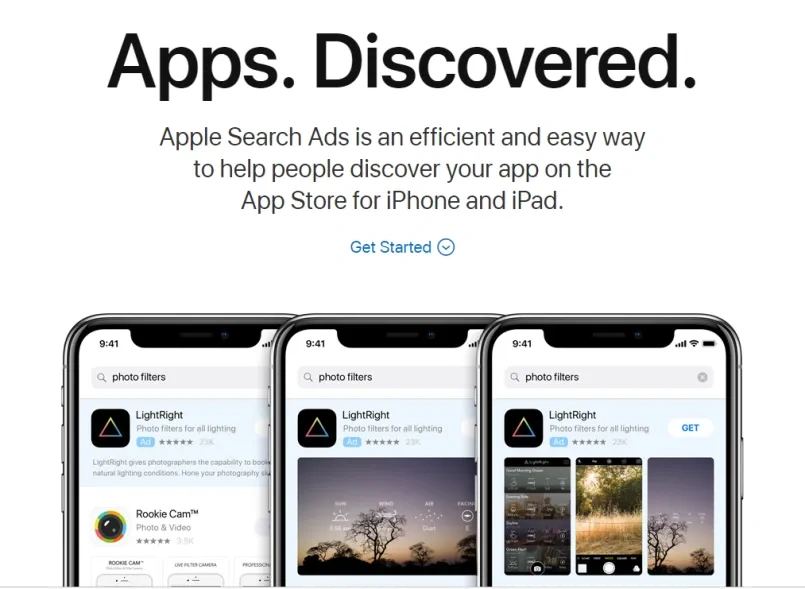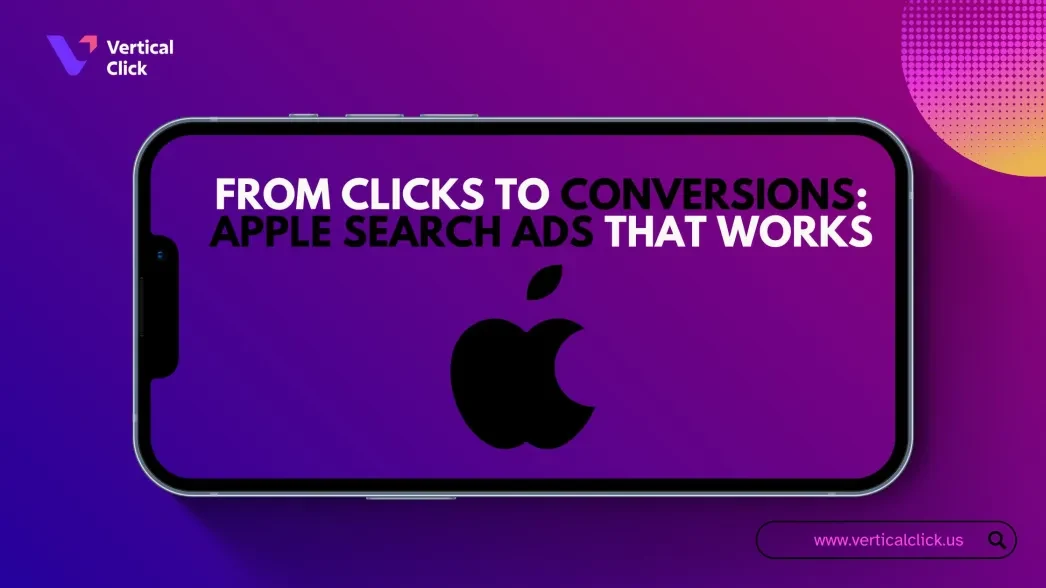Visibility is everything in today’s app marketplace, but visibility alone does not equal revenue. Getting noticed in an App Store with more than 2 million apps is a challenge; Apple Search Ads cut through the noise, but success is earned not by gaining clicks but by turning them into conversions.
So how do marketers move beyond impressions and create Apple Search Ads that actually work? Here is a breakdown: strategies that take your campaigns from clicks to installs and beyond.
Why Apple Search Ads Matter

Apple Search Ads are at the top of App Store search results. With 65 percent of app downloads resulting from search, one could consider it a primary channel in capturing high-intent users. Unlike traditional search ads, however, Apple’s ecosystem is built around first-party data, giving the advertiser really marvelous precision and performance.
Start with smart keyword targeting
The intent-focused keyword research to build effective Apple Search Ads is a theme-based (brand, competitor, category, features) basis for grouping keywords to create both Broad Match and Exact Match campaigns.
Tips:
- Use Search Match.
- Bid more on those Exact Match terms displaying high-conversion intent.
- Prevent keyword overlap between ad groups to reduce competition with yourself.
- Optimize Your App Store Product Page
The ad may get the click, but the App Store page seals the deal. Ensure your screenshots, app preview videos, and descriptions clearly convey your value proposition.
Checklist:
- Outline key features with the first 1-3 screenshots.
- Add benefit captions.
- Make sure the messaging is consistent with the ad keyword theme.
- Create Compelling Ad Variations
Apple lets you customize creative sets based on your product page’s metadata. For example, match images to the following:
- Fitness tracker images for calorie counter searches.
- A/B test different visuals and ordering to see what converts best.
- Remember that Apple Search Ads will not allow full-on custom creatives, so your product page bits and pieces must take on the heavy lifting.
- Leverage Custom Product Pages (CPPs)
Custom Product Pages help create different variations of the App Store page for specific users and keywords, which can be linked directly from Search Ads.
Uses:
- Present and push different features of the app that suit that particular user.
- Increase conversions by aligning anticipated user expectations better.
- Conduct controlled experimentation to fine-tune the creative strategy.
- Optimize Bidding & Budgeting
Many advertisers set broad bids or don’t keep a close watch on campaign performance. Use CPT, cost-per-tap data, and CPA, cost-per-acquisition goals, to fine-tune your bidding strategy.
Tips:
- Increase bids on top-performing keywords.
- Lower bids (or pause) on high-tap, low-conversion terms.
- Monitor seasonal trends and adjust budgets accordingly.
- Analyze, Iterate, Scale
Apple Search Ads will give a reporting dashboard that breaks down TTR, conversion rates, and ROAS metrics, alongside the mobile attribution tools like Adjust, Appsflyer, to give you a full-funnel picture.
Regular checks should include:
- Which keywords acquire loyal users and not just downloads?
- Have particular demographics or devices converted better?
- Which of the ad groups has performed poorly and may need refreshing?
Conclusion
Running Apple Search Ads that translate is not just about splurging money at the top of the funnel, but aligning your targeting strategies with your creative and optimizing on the installation path: durable installations with engagement.
Whether it’s your first app or an established one, continuous optimization is key. In such a highly competitive industry as the App Store, the difference between a click and a conversion could boil down to one good screenshot, one well-optimized keyword, or one finely tuned bid.

Leave a Reply